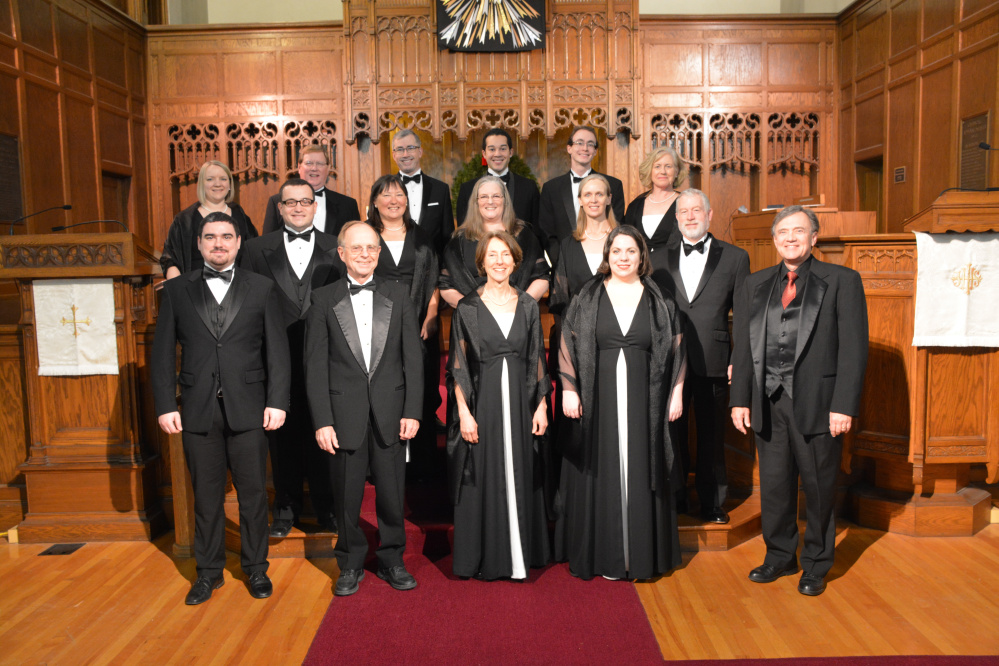In the commerce-driven world of the early 21st century, you could easily get the impression that the 12 days of Christmas are celebrated in the days leading to the holiday. Advertisements for big box stores everywhere proclaim as much, and for all practical purposes, the holiday festivities end with New Year’s Day, followed quickly by reports of the holiday season’s success or failure, based on how much money was spent.
Even talking about Christmas this far into January feels odd today, but it is worth remembering, if only as a point of arcane historical interest, that the 12 days of Christmas actually run from Christmas through the Feast of the Epiphany, on Jan. 6.
ChoralART, one of the many first-rate choirs flourishing in Portland, has found a way to acknowledge both the modern and time-honored conceptions of the season. Its annual “Christmas at the Cathedral” concert kicked off the musical side of Christmas just 10 days after Thanksgiving. And on Sunday, the choir and its director, Robert Russell, marked the holiday season’s traditional end with “An Epiphany Celebration” at Williston-Immanuel United Church – two days late, but why quibble?
For the occasion, Mr. Russell led the 15-voice chamber version of the choir, the ChoralART Camerata, and his program, naturally, was weighted toward Christmas works, with settings of traditional texts – “Hodie Christus Natus Est” and “O Magnum Mysterium,” for example – on the first half, and more unusual, but equally celebratory selections after the intermission.
Mr. Russell noted those textual distinctions in his remarks from the podium, but the program’s more striking aspect was that it was built primarily around contemporary music. Apart from three pieces by composers who flourished in the early 16th century – Giovanni Gabrieli’s magnificent eight-voice “O Magnum Mysterium,” Jean Mouton’s “Noe, Noe, Psallite Noe” and the Kyrie and Gloria from Jacob Arcadelt’s Mass (which is based on the theme of the Mouton work) – the music was by 20th and 21st century composers.
Not that the works were explosions of wild-eyed experimentalism. The Danish composer Niels La Cour began his 1982 “Hodie Christus Natus Est” with an evocation of plainsong chant, which quickly blossomed into rich, warm-hued harmonies. His “Ave Maria” setting is slightly more up to date, as is “Bogoróditse Djévo,” a Slavonic tribute to Mary by the Estonian post-Minimalist Arvo Pärt, who used the rhythms of the text as an engine to drive the piece.
Rhythmic propulsion, along with an interesting interplay between the sopranos and basses, were the main attractions of “O Ship That Travellest,” an energetic piece by Saigelyn Green, a student at University of Southern Maine. Green was present at the concert, as was Hilary Purrington, whose involved setting of verses from Tennyson’s “Ring Out, Wild Bells” was having its premiere, as the winner of the Third Annual New England Carol Contest.
Tennyson’s imagery and Purrington’s ear-catching setting give the piece an appealing, carol-like surface, but its real appeal is in the sophistication and subtlety of its inner rhythms, which have the choir’s sections singing at different speeds but remaining tightly interwoven.
The most adventurous of the contemporary scores were Daniel Elder’s “The Heart’s Reflection,” a haunting setting of lines from Proverbs that used harmonies so untethered and shimmering that they shifted before you could focus on them; Jake Runestad’s brisk “Alleluia” setting, which demands gentle vocal glissandi (a sliding effect that he used sparingly) and clapping in its outer sections; and John Gardner’s ebullient, outgoing and slightly brash “A Gallery Carol.”
The pared-down version of ChoralART had its tenuous moments – mostly, attacks that were not fully unified. But generally, it sang with considerable beauty and cohesiveness. All but a few works were unaccompanied, with organist Christopher Pelonzi supporting the choir in the Gardner, short works by Stephen Paulus and the finale, Will Todd’s “The Call of Wisdom,” for which the choir fanned out into the church and surrounded listeners in the center pews.
Allan Kozinn is a former music critic and culture writer for The New York Times who lives in Portland. He can be contacted at:
allankozinn@gmail.com
Twitter: kozinn
Send questions/comments to the editors.



Success. Please wait for the page to reload. If the page does not reload within 5 seconds, please refresh the page.
Enter your email and password to access comments.
Hi, to comment on stories you must . This profile is in addition to your subscription and website login.
Already have a commenting profile? .
Invalid username/password.
Please check your email to confirm and complete your registration.
Only subscribers are eligible to post comments. Please subscribe or login first for digital access. Here’s why.
Use the form below to reset your password. When you've submitted your account email, we will send an email with a reset code.